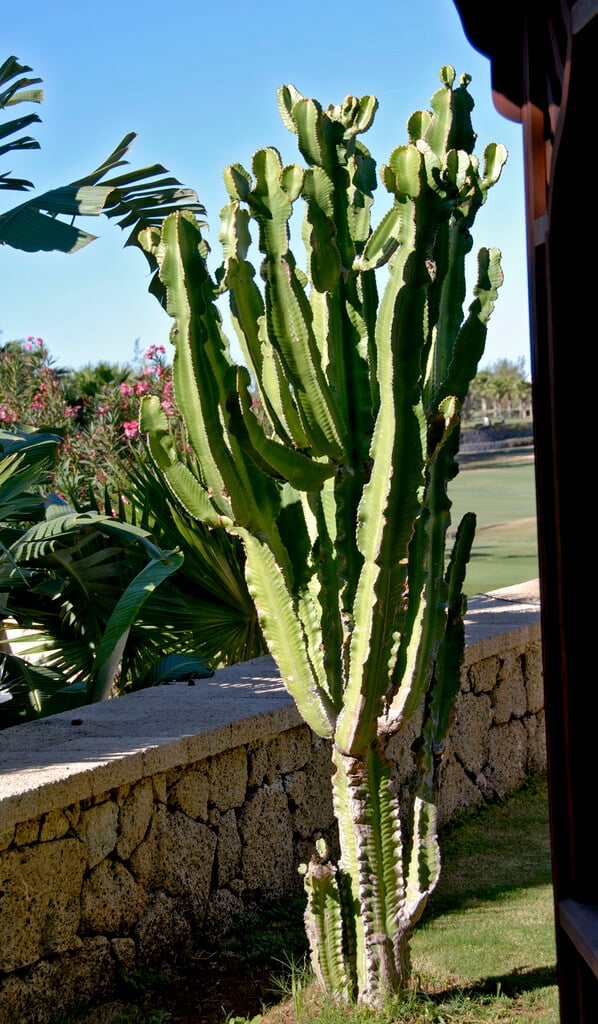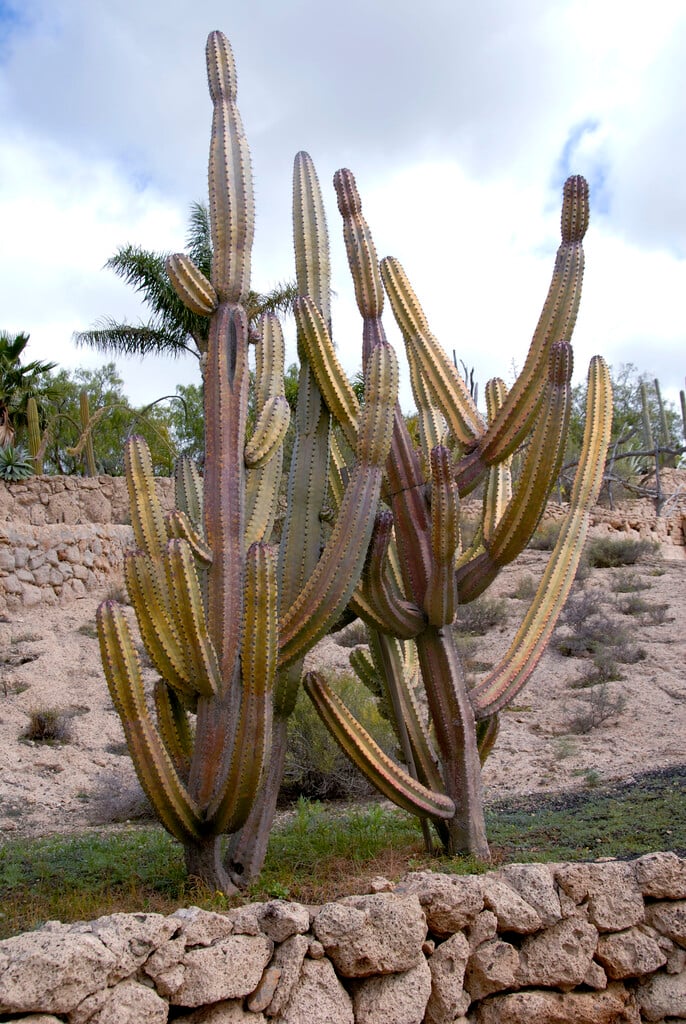Cereus repandus
cadushi
A branching, shrubby or tree-like cactus with columnar stems up to 10m tall. The cylindrical, grey-green to bluish stems, up to 20cm in diameter, are sometimes segmented and have 8-13 ribs. Creamy-white nocturnal flowers open for a single night and may be followed by spherical or egg-shaped, edible fruits up to 4cm long
Size
Ultimate height
8–12 metresTime to ultimate height
20–50 yearsUltimate spread
0.1–0.5 metresGrowing conditions
Moisture
Well–drainedpH
Acid, Alkaline, NeutralColour & scent
| Stem | Flower | Foliage | Fruit | |
| Spring | Green Blue Grey Silver | White Cream | ||
|---|---|---|---|---|
| Summer | Green Blue Grey Silver | Cream White | ||
| Autumn | Green Blue Grey Silver | |||
| Winter | Green Blue Grey Silver |
Position
- Full sun
Aspect
South–facing or West–facing
Exposure
ShelteredDrought resistance
Yes Hardiness
H1CBotanical details
- Family
- Cactaceae
- Native to GB / Ireland
- No
- Foliage
- Evergreen
- Habit
- Columnar upright, Spreading branched
- Genus
A genus of around 33 species of large, columnar cacti, native to South America with ribbed and spiny stems. Large, funnel-shaped flowers bloom at night, mainly white but sometimes appearing in pink, purple, yellow, green and (rarely) cream
- Name status
Correct
- Plant range
- Venez., Antilles
How to grow
Cultivation
Grow in a standard cactus mix with sharp drainage, in a bright sunny spot; could be placed outdoors in a sheltered spot in summer. Water freely when in growth and keep almost dry at other times. See houseplant cacti and succulent cultivation
Propagation
Propagate by seed in early spring or by stem cuttings from branching specimens
Suggested planting locations and garden types
- Patio and container plants
- Houseplants
- Architectural
- Conservatory and greenhouse
Pruning
No pruning required
Pests
May be susceptible to mealy bugs and scale insects
Diseases
Generally disease-free, though over-watering will cause rot
Get involved
The Royal Horticultural Society is the UK’s leading gardening charity. We aim to enrich everyone’s life through plants, and make the UK a greener and more beautiful place.

